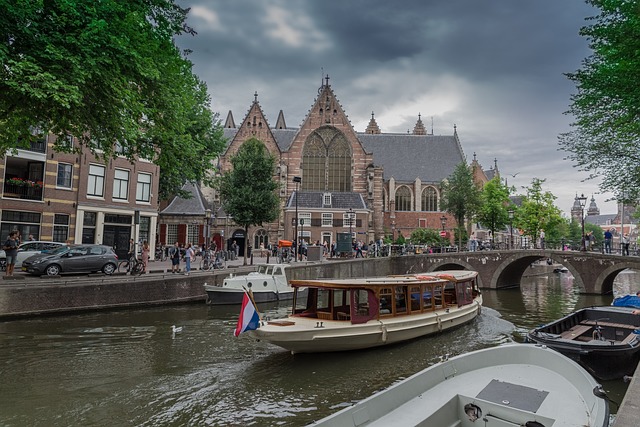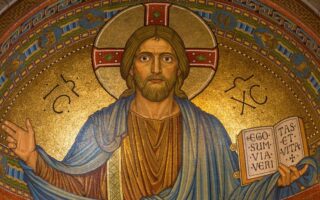In the Catholic Church, a cathedra is a bishop’s official seat or throne in a cathedral. It symbolizes the bishop’s authority and teaching role within the diocese.
Table of Contents
History of the Cathedra in the Catholic Church
Have you ever wondered what the term “cathedra” means in the Catholic Church? The word itself may sound unfamiliar, but it holds significant importance in the history and tradition of the Church. In this article, we will explore the origins and evolution of the cathedra, shedding light on its role within the Catholic Church.
The term “cathedra” is derived from the Latin word for “chair” or “throne.” In the context of the Catholic Church, the cathedra refers to the bishop’s seat or throne in a cathedral. The cathedra symbolizes the bishop’s authority and teaching office within the diocese. It serves as a physical representation of the bishop’s role as the spiritual leader and shepherd of the local Church community.
The concept of the cathedra dates back to the early days of Christianity when bishops presided over their congregations from a designated seat in the church. Over time, the cathedra became a symbol of the bishop’s authority and teaching ministry. In the early centuries of the Church, bishops were often persecuted for their faith, and the cathedra served as a symbol of their steadfast commitment to the Gospel.
As the Church grew and developed, the cathedra became a central feature of cathedral architecture. Cathedrals were built with a prominent bishop’s throne located in the sanctuary, facing the congregation. The cathedra was often elaborately decorated with carvings, symbols, and inscriptions, reflecting the bishop’s status and authority within the Church.
Throughout history, the cathedra has played a significant role in the liturgical life of the Church. Bishops would preside over Mass and other sacred ceremonies from their cathedra, symbolizing their role as the chief celebrant and teacher of the faith. The cathedra also served as a focal point for the bishop’s pastoral ministry, as they would deliver homilies and teachings from their seat to the faithful gathered in the cathedral.
In addition to its symbolic and liturgical significance, the cathedra also holds canonical importance within the Church. The bishop’s cathedra is considered the official seat of the diocese, representing the bishop’s authority over the local Church community. The cathedra is where the bishop exercises his teaching, governing, and sanctifying ministry, in communion with the Pope and the College of Bishops.
Today, the cathedra continues to be a central feature of cathedral architecture and liturgical practice in the Catholic Church. Bishops around the world preside over their dioceses from their cathedra, upholding the traditions and teachings of the Church passed down through the centuries. The cathedra serves as a visible reminder of the bishop’s role as the shepherd of God’s people, guiding them in faith and leading them on the path to salvation.
In conclusion, the cathedra holds a special place in the history and tradition of the Catholic Church. It symbolizes the bishop’s authority, teaching ministry, and pastoral care for the faithful. As we reflect on the significance of the cathedra, may we be inspired to embrace our own roles as disciples of Christ, following the example of our bishops in proclaiming the Good News and building up the Kingdom of God.
Significance of the Cathedra in Church hierarchy
Have you ever wondered what the term “cathedra” means in the Catholic Church? If you’re not familiar with this term, don’t worry – you’re not alone! The cathedra is actually a significant symbol in the Church hierarchy, representing the authority and leadership of the bishop.
In Latin, the word “cathedra” means “chair,” and in the context of the Catholic Church, it refers to the bishop’s throne or seat. The cathedra is typically located in the sanctuary of the cathedral, which is the principal church of a diocese where the bishop presides. This chair is a symbol of the bishop’s authority and teaching office, as well as his role as the spiritual leader of the diocese.
The cathedra is not just a piece of furniture – it holds great symbolic importance in the Church. When a bishop is installed in his diocese, he is said to “take possession of the cathedra,” signifying his assumption of authority and responsibility for the spiritual well-being of the faithful in his care. The cathedra is where the bishop presides over liturgical celebrations, such as Mass, and where he delivers his homilies and teachings to the faithful.
In addition to its symbolic significance, the cathedra also plays a practical role in the governance of the diocese. The bishop’s chair is a visible reminder of his authority and leadership, serving as a focal point for the faithful to gather around and receive his guidance and pastoral care. The cathedra is also a symbol of unity within the diocese, as it represents the bishop’s role as the shepherd of his flock, guiding and protecting them on their spiritual journey.
The cathedra is often adorned with intricate carvings and decorations, reflecting the bishop’s status and dignity within the Church. It is typically placed on a raised platform, known as a dais, to signify the bishop’s elevated position in the hierarchy. The cathedra may also be flanked by other symbols of the bishop’s authority, such as his coat of arms or the papal insignia, further emphasizing his role as a successor to the apostles and a representative of Christ on earth.
In some cathedrals, the bishop’s chair is accompanied by a second chair, known as the “sedilia,” which is reserved for the priests who assist the bishop during liturgical celebrations. The sedilia is a reminder of the collaborative nature of the Church’s ministry, as the bishop works in partnership with his priests to serve the faithful and build up the Kingdom of God.
Overall, the cathedra is a powerful symbol of the bishop’s authority and leadership in the Catholic Church. It serves as a visible reminder of the bishop’s role as the spiritual shepherd of his diocese, guiding and nurturing the faithful in their journey of faith. So the next time you see a bishop seated in his cathedra, take a moment to reflect on the significance of this ancient symbol and the important role it plays in the life of the Church.
The role of the Bishop’s Cathedra in liturgical celebrations

Have you ever attended a Catholic Mass and noticed a large, ornate chair at the front of the church? This chair is known as the Cathedra, and it holds a significant role in the liturgical celebrations of the Catholic Church. The Cathedra is not just any ordinary chair; it is the seat of the bishop, symbolizing his authority and teaching office within the diocese.
During a Mass, the bishop’s Cathedra is placed prominently at the sanctuary, usually behind the altar. This placement signifies the bishop’s role as the chief shepherd of the diocese, overseeing the spiritual well-being of the faithful. The Cathedra is a physical representation of the bishop’s authority to teach, govern, and sanctify the people of God within his diocese.
When the bishop presides over a liturgical celebration, he sits in his Cathedra to signify his role as the head of the local church. The Cathedra is a symbol of unity, as it represents the bishop’s connection to the apostolic tradition passed down through the ages. It is a reminder to the faithful that the bishop is the successor of the apostles, entrusted with the task of shepherding the flock and leading them closer to Christ.
The Cathedra is also a symbol of teaching authority. When the bishop sits in his chair, he is proclaiming the Word of God to the faithful gathered for worship. The Cathedra is a visual reminder that the bishop is the chief teacher of the faith in his diocese, responsible for guiding the faithful in their spiritual journey and helping them grow in their relationship with God.
In addition to its symbolic significance, the Cathedra also plays a practical role in the liturgical celebrations of the Catholic Church. During Mass, the bishop may use his Cathedra as a place to sit while listening to the readings or delivering his homily. The Cathedra provides a focal point for the faithful to direct their attention during the liturgy, helping to create a sense of reverence and unity among the worshippers.
The Cathedra is often adorned with intricate carvings, symbols, and decorations that reflect the bishop’s coat of arms or the patron saints of the diocese. These embellishments serve to enhance the beauty and solemnity of the liturgical space, creating a sense of awe and reverence for the bishop’s role as the spiritual leader of the local church.
In conclusion, the Cathedra holds a significant role in the liturgical celebrations of the Catholic Church. It is not just a piece of furniture but a symbol of the bishop’s authority, teaching office, and connection to the apostolic tradition. When the bishop sits in his Cathedra, he is proclaiming his role as the chief shepherd of the diocese, entrusted with the task of guiding the faithful in their spiritual journey and leading them closer to Christ. So, the next time you attend a Catholic Mass, take a moment to reflect on the significance of the bishop’s Cathedra and the important role it plays in the life of the Church.
Different styles and designs of Cathedra throughout history
Have you ever wondered what the large, ornate chair at the front of a Catholic church is called? That chair is known as the Cathedra, which is a symbol of the bishop’s authority in the church. The word “Cathedra” comes from the Latin word for “chair,” and it represents the bishop’s role as the spiritual leader of the diocese.
Throughout history, Cathedra designs have varied greatly, reflecting the artistic styles and cultural influences of different time periods. In the early days of the church, Cathedra were often simple wooden chairs, reflecting the humble origins of Christianity. As the church grew in power and influence, Cathedra became more elaborate and ornate, with intricate carvings and decorations.
One of the most famous Cathedra designs is the Throne of St. Peter in the Vatican, which is believed to have been used by the Apostle Peter himself. This Cathedra is a symbol of the Pope’s authority as the head of the Catholic Church and is adorned with intricate carvings and gold leaf.
In medieval times, Cathedra designs became even more elaborate, with bishops commissioning skilled craftsmen to create chairs that were works of art in their own right. These Cathedra often featured intricate carvings of saints and biblical scenes, as well as precious metals and gemstones.
During the Renaissance, Cathedra designs were influenced by the artistic styles of the time, with chairs featuring classical motifs and elegant proportions. Some Cathedra were even designed by famous artists such as Michelangelo and Bernini, adding to their prestige and beauty.
In more recent times, Cathedra designs have become more streamlined and modern, reflecting the minimalist aesthetic of contemporary design. Many Cathedra today are made of simple wood or metal, with clean lines and understated decorations.
Despite the changes in design over the centuries, the Cathedra remains a symbol of the bishop’s authority and spiritual leadership in the Catholic Church. It is a reminder of the bishop’s role as a shepherd of his flock, guiding and caring for his parishioners with wisdom and compassion.
Whether simple or ornate, traditional or modern, the Cathedra is a powerful symbol of the bishop’s connection to the church and his responsibility to lead and serve his community. It is a physical representation of the bishop’s spiritual authority and a reminder of the sacred trust placed in him by the faithful.
So next time you see a Cathedra in a Catholic church, take a moment to appreciate its beauty and significance. It is not just a piece of furniture, but a symbol of the bishop’s role as a spiritual leader and shepherd of his flock.
The symbolism behind the Cathedra in Catholic theology
Have you ever wondered what the large, ornate chair at the front of a Catholic church is called? That chair is known as the Cathedra, and it holds a significant symbolic meaning in Catholic theology. The Cathedra is not just any ordinary chair; it represents the authority and teaching office of the bishop who presides over the diocese.
In Latin, the word “Cathedra” means “seat,” and it is from this word that we get the term “cathedral.” The Cathedra is typically located in the sanctuary of the cathedral, which is the principal church of a diocese where the bishop has his official seat. The Cathedra is a symbol of the bishop’s authority and teaching role within the Church.
When a bishop is installed in his diocese, he is said to “take possession” of his Cathedra. This act symbolizes his assumption of the teaching office and pastoral care of the faithful in his diocese. The Cathedra is a physical reminder of the bishop’s role as the chief shepherd of his flock, guiding and leading them in their faith journey.
The design of the Cathedra is often elaborate and ornate, reflecting the importance and dignity of the bishop’s office. It is usually placed on a raised platform, symbolizing the bishop’s elevated position within the Church hierarchy. The back of the Cathedra may be adorned with intricate carvings or symbols representing the bishop’s authority and connection to the apostolic tradition.
In addition to its symbolic significance, the Cathedra also serves a practical purpose during liturgical celebrations. The bishop presides over important ceremonies from his Cathedra, such as ordinations, confirmations, and other sacramental rites. The Cathedra is a visible reminder to the faithful of the bishop’s presence and leadership in the worship of the Church.
The Cathedra is not only a symbol of the bishop’s authority but also a reminder of the unity of the Church. The bishop’s Cathedra is connected to the Cathedra of the Bishop of Rome, the Pope, who is the head of the universal Church. The Cathedra represents the continuity of apostolic teaching and authority passed down through the centuries from the time of the apostles.
In some cathedrals, there may be multiple Cathedra, representing the unity of the bishop with his auxiliary bishops or other bishops in the region. These additional Cathedra serve as a reminder of the collegiality and shared responsibility of the bishops in shepherding the faithful in their dioceses.
The Cathedra is a powerful symbol that reminds us of the rich tradition and history of the Catholic Church. It is a visible representation of the bishop’s authority and teaching role, as well as a reminder of the unity and continuity of the Church. The next time you see a Cathedra in a cathedral, take a moment to reflect on its significance and the role of the bishop in guiding and shepherding the faithful in their faith journey.
Conclusion
In the Catholic Church, a cathedra is the bishop’s official seat or throne in a cathedral. It symbolizes the bishop’s authority and teaching role within the church.


